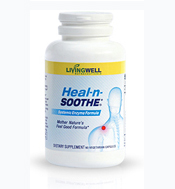 Acetaminophen, better known as Tylenol to most, is used by an estimated 50 million Americans every week, often for treating aches and pains, fever or symptoms of clod and flu.[i] Many people think nothing of popping a couple of Tylenol pills here and there, considering it to be one of the safest over-the-counter medications on the market.
Acetaminophen, better known as Tylenol to most, is used by an estimated 50 million Americans every week, often for treating aches and pains, fever or symptoms of clod and flu.[i] Many people think nothing of popping a couple of Tylenol pills here and there, considering it to be one of the safest over-the-counter medications on the market.
But Tylenol, like virtually every drug, has a number of effects once inside your body, above and beyond the desired effect of pain relief. Some of the, such as liver damage, can be deadly. Others, like a newly discovered “blunting effect” on emotions, could have implications for your mood and well-being.
Tylenol Dampens Your Emotions, for Better or Worse
In a recent study of 80 college students, half of the participants tool 1,000 milligrams (mg) of acetaminophen while the other half took a placebo. One hour later, the students were shown photographs designed to evoke an emotional response, either positive or negative.
Those who had taken acetaminophen had more muted emotional responses, which the researchers believed could be due to acetaminophen altering brain activity. They suggested it may alter the activity of serotonin, reduce inflammatory signaling or decrease activation in brain regions responsible for emotion.[ii] According to the study:[iii]
“Participants who took acetaminophen evaluated unpleasant stimuli less negatively and pleasant stimuli less positively, compared with participants who took a placebo. Participants in the acetaminophen condition also rated both negative and positive stimuli as less emotionally arousing …
These findings suggest that acetaminophen has a general blunting effect on individuals’ evaluative and emotional processing, irrespective of negative or positive valence.”
Further, although other painkillers, such as aspirin and ibuprofen, haven’t been studied for these emotional effects, the researchers believe they, too, may have a similar emotional-blunting effect.
People are Dying From Tylenol-Induced Liver Damage
Many are not aware that Tylenol, in doses just higher than those recommended, is dangerous to your liver. From 2001 to 2010, more than 1,500 Americans died by accidentally overdosing on acetaminophen.[iv] It’s far easier to overdose than you might think; what you might regard as large or excessive doses are not required. As ProPublica reported:[v]
“The FDA [U.S. Food and Drug Administration] sets the maximum recommended daily dose of acetaminophen at 4 grams, or eight extra strength acetaminophen tablets. That maximum applies to both over-the-counter and prescription drugs with acetaminophen.
Taken over several days, as little as 25 percent above the maximum daily dose – or just two additional extra strength pills a day – has been reported to cause liver damage, according to the agency. Taken all at once, a little less than four times the maximum daily dose can cause death.”
This is why, back in 2011, the FDA specifically asked all makers of prescription acetaminophen products to limit dosages to 325 milligrams (mg) per capsule. Without getting overly scientific, the reason why acetaminophen has the potential to cause liver damage is due to NAPQI, a toxic substance that is produced as a byproduct when some acetaminophen is processed by your liver.
Under the recommended doses, glutathione, an antioxidant in your body, is capable of neutralizing NAPQI so the acetaminophen can be safely excreted by your kidneys. If you take too much, however, the NAPQI will build up and begin to destroy your liver cells. Liver failure and death can soon follow.[v]
Acetaminophen products may also cause fatal skin reactions known as Stevens-Johnson Syndrome (SJS), toxic epidermal necrolysis (TEN) and acute generalized exanthematous pustulosis (AGEP). Though this is rare, it happens often enough that the FDA issued a specific warning about it in 2014.[vi]
Steep Risks for a Drug That Works No Better Than a Placebo …
Liver damage … skin reactions … blunted emotions … such side effects might be worth the risk if the medication worked wonders for your pain. But such isn’t likely to be the case for Tylenol, which was shown last year to work no better than a placebo. Patients with low-back pain were randomly assigned to receive up to four weeks of regular doses of paracetamol (three times a day) or placebo. (Acetaminophen is known as paracetamol in most countries outside of the U.S.)
The median time to recover from low-back pain was 17 days in the paracetamol group while those in the placebo group recovered a day sooner, after 16 days![vii] The implications of this are astounding, and call into question whether Tylenol should be used at all to treat back pain.
Of course, you don’t want to suffer in pain needlessly, either, which is why Heal-n-Soothe, the all-natural pain- and inflammation-reliever, is truly invaluable. With 12 proven anti-inflammatories straight from Mother Nature herself, you can get pain relief when you need it without having to worry about damaging your physical and emotional health.
[i] Tylenol.com, Tylenol Dosage for Adults
[ii] US News & World Report April 15, 2015
[iii] Psychological Science April 10, 2015
[iv] ProPublica September 20, 2013
[v] ProPublica September 20, 2013


